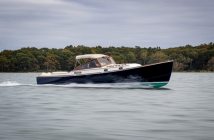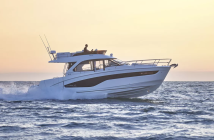Here’s some great advice from Skipper Tips about how to use ranges to cruise safely:
You enter an unfamiliar channel late in the afternoon. You scan your chart plotter or nautical chart to check for dangers to the left, or to the right. Rocky shoals lie close to the channel edges on each side.
Be on the lookout for one of the sailor’s best friends – channel ranges (also called transits). These markers will lead you down the center of a narrow channel in safety, keep your sailboat in deep water, and help you navigate with confidence, day or night.
Follow these three easy steps to use channel ranges:
1. Scan your nautical chart or chart plotter for solid black lines down the center of a dredged channel, or at the entrance to a harbor or cove. Realize that dredged channel edges are marked by dashed lines on each side. But ranges show a solid black line. Follow the solid black line in to the shore. When you sight the range, look for these characteristics:
Daytime Characteristics
Note that ranges can be any shape or color. In US waters, the US Coast Guard often uses a standard configuration of rectangular shaped dayboards with a thick vertical stripe down the center. Keep the two vertical stripes lined up to stay “on range” as you sail up or down a channel.
Nighttime Characteristics
By night, check the light characteristics on your nautical chart or chart plotter. Most front ranges show a quick-flashing light. Most back ranges show an isophase light–or equal periods of light and dark. Always study the chart to determine a range’s specific light characteristics.
In the illustration, the lower front range shows a quick flashing light. The higher back range shows an isophase 6 second light (3 seconds of steady light followed by 3 seconds of darkness). Other light characteristics can be used, but those described above are often seen in US waters.
2. When ranges are lined up (middle illustration), this means you are “on range” and in the center of the deepest part of the channel or harbor approach.
Wind and current can push you off range. If you find yourself “off range” , turn in the direction of the lower front range. Use these two rules along with the illustration to get back “on range”:
— Lower range to the right, turn right to get back on range.— Lower range to the left, turn left to get back on range.
3. Stop using the range well before the solid black range line turns to a dashed black range line. That dashed line indicates that you must change course to avoid going out of the channel. Mark your nautical chart or chart plotter to highlight this point for sailing safety. Read more: http://skippertips.com




